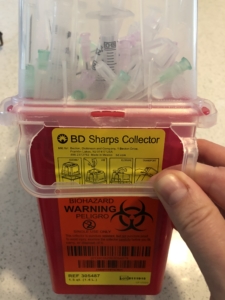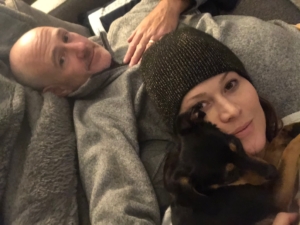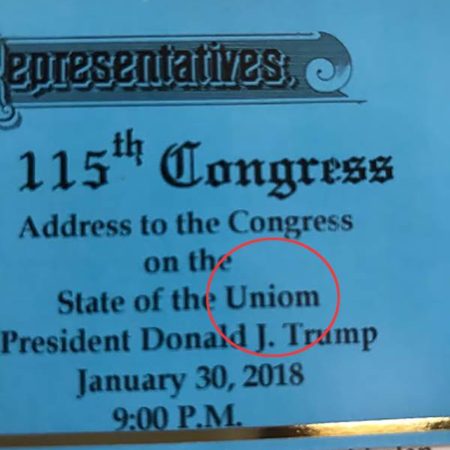I have produced thousands of hours of TV news. I have willed chopper signals to appear (aggravating directors), created brand new news shows in cities I didn’t know, worked days straight without sleep to get the job done…
Never in my life have I wanted to produce something more, and have been more disappointed — over and over.
This story would be incomplete if I skipped to the end and only told you the good news.
I spent years reading other women’s good news and feeling broken. I don’t want to do the same to any woman who may read this. Leaving the bad news out doesn’t tell the complete story.
In the past 2.5 years I have:
- Powered through five rounds of IVF (my husband had cancer, so this was our only route possible)
- Lost a child at 8.5 weeks pregnant
- Lost twin girls at 17-weeks pregnant
- Gone through eight procedures with anesthesia (something I had never done before turning 40)
- Shot myself up almost every night with several drugs (hiding it on planes, in restaurant bathrooms, while traveling for clients)
- Been told by one doctor that my eggs were too old (when they were fine, thank you very much)
- Changed my entire diet, in addition to everything we use in our house and on our bodies
All to produce a human being in the end.
And we’ve done it. 
With the help of incredible doctors and nurses….
Ted and I could not be happier (oh, and still a little scared) to broadcast that we are expecting a baby girl in April 2019.
I have never worked this hard for anything. And I’m the girl who took 32 credits each semester of senior year in college to graduate on time in 4 years. I guess having a baby in my 40s was to be expected…
If you’re going through something baby related, I’d like to share what we did to turn around our luck a little. Please know, you are not alone. Here’s what we changed and maneuvered around in the past 2.5 years.
Don’t take “no” for an answer
When I started dating my now husband, the conversation of children came up, as it does. Ted told me the story of his cancer. Before they saved his life, they saved 10 vials of sperm in case he wanted to create life someday. That was the first time during this process I didn’t take “no” for an answer. No chance of having a baby naturally? No problem. We’ll get this done. I thought, no big deal… lots of people do IVF with amazing success rates. (See below where I talk about not trusting the media.)

Ted and I were married when I was 39 and a few months later, we tried our first IUI. I was 40. I got pregnant each time the doctors helped me. Whether it was an IUI or egg transfer with IVF, I was pregnant. Oh, except for the one time I had an embryo transfer and hours later (when I was supposed to be on bed rest) our entire basement flooded with 14 inches of rain water because the people who renovated our home left a big clog in the sewer going out… there was that, but that definitely doesn’t count against my fertility. That was the builder and the realtor’s lack of divulging information. Back to my fertility. I had no issues getting pregnant.
In 2017, I became pregnant with very rare mono/mono twin girls. This was IVF #2. They split late, and shared a placenta and sac. They were so closely entwined together. I was afraid each day carrying them. The doctors told us we had a 50/50 chance of delivery and if one passed, the other could not survive. There are many risks including them being tied up in an umbilical cord. We lost them at 17 weeks. Two months after they died, we went back to our doctor to ask him for next steps.

Without any hesitation, he said, “egg donor.” I was 41 and devastated. I asked him what he saw with my eggs that made him think that this was my fault. He only responded that in women at my age, the best case of delivering a healthy baby would be with an egg donor. I left feeling defeated and ANGRY. I was getting pregnant. Was it too many fertility drugs that made my embryo split so late? Was it not getting off the drugs fast enough? Was it just bad luck? Whatever it was… I had no real proof (neither did he) that my embryos were at fault. He didn’t want to keep trying with this 41-year old’s eggs. I was hurting his numbers.
We ditched that doc and went with another fertility clinic in Chicago that had higher CDC rates for live births (the number you want to compare). The service and compassion was night and day different at Advanced Fertility Center of Chicago. Dr. Sherbahn didn’t take hundreds of patients at a time. There were never long waits in the waiting room for all the early morning blood draws. The doctor was very scientific and to the point — which we loved — and gave us the news I was hoping for: it is definitely more difficult to conceive over 40, and even more after 42, but he saw nothing wrong with my eggs or our sperm.
Do not take “no” for an answer.
Let yourself be vulnerable
We’re all different, so this might not be your style. I couldn’t keep my secrets inside. They were eating away at me. I felt alone and broken. I felt less than a woman not being able to go all the way to delivery. I was getting puffy because of the shots and couldn’t workout to make myself feel better. The doctors will tell you to stop the intense workouts after a transfer, and I found out later that the intense workouts were probably working against me during the weeks of shots. I didn’t want to see my friends because I couldn’t drink (and that was no fun), plus, I felt like they just wouldn’t understand. And, the hormones… don’t get me started. Just ask my husband.
So after the first loss and as I hitched my future to IVF, I started to tell people. I opened up. This did two incredible things for me: it increased my circle of friends dramatically instead of closing me off — and I learned a tremendous amount from these women. A tremendous amount.

I was so open, it probably scared some people. But, I couldn’t stop what I had started. I was feeling less alone and broken as I heard other women’s stories. All that talking (that I’m so naturally good at) attracted more women to me who had experienced similar things… and who could offer me guidance. If I hadn’t shared, I would not have heard from a friend about this other doctor with the great CDC live birth rates. I would not have known that it could take much longer than I expected. I would not have known that there were women I knew and had worked with who had gone as far as 10 IVF rounds to produce a baby. That gave me the drive to keep going and honestly, the competitor in me was NOT going to give up before I went as far as her. If she could do it – I felt that I could do it. If I hadn’t starting talking about what I was going through, I would not have reached out to a woman online who I saw had the same very rare twins as mine — and who outlined to me the major changes she made to give birth. I also wouldn’t have met the owner of a fertility clinic who talked me through how all the work stress and very intense workouts I’m used to could hurt a woman’s egg production and pregnancy. Fight or flight? The way I had learned to live in the TV news business for the past 20 years? NOT good for egg production. Actually, I had really screwed up my thyroid because of all those overnight hours working in news and because of my lack of relaxation and coping mechanisms. I also wouldn’t have known how the chemicals I was putting all over my body and cleaning my house with could also change my outcomes.
Sharing isn’t always easy. I am a media coach and public speaking trainer. A few of my clients knew when I was pregnant with the twins. It was so uncomfortably noticeable that I was pregnant – and early on. Because the twins were mono/mono, the doctors were already charting out a very early delivery and bedrest. Plus, I was in my second trimester when I lost them, so I had started to tell a few professional clients. Seeing the disappointment in their eyes left me uneasy. I was coaching someone with a professional sports team here in Chicago at the time, and even his wife knew. I felt like I had let them down too. They were excited for me… they loved their kids and knew having a child would bring so much new love into my life. Even through that weirdness — I am glad people knew.
Talking to a therapist, being as vulnerable as possible with her, and not holding anything back was also incredibly helpful. I was training a nationally-known psychotherapist, author and speaker at the time that I lost my twins. Joyce Marter is an incredible expert on the subjects of psychology, career, wellness and relationships. I was helping her craft her message for a national speech she was giving. After one of our sessions, I turned the tables and mentioned what was going on in my personal life. I asked her for a referral. I told her I thought it was time for me to talk to someone about my losses and how to cope. She sent me to a wonderful therapist in Chicago where I learned visualization techniques that at first, I thought would never help, but then I used during all the hardest times and I still use them. She also helped me with something I had been doing for years, and thought was helping. I compartmentalized. I had a Plan B and C at all times. I was protecting myself from not feeling the pain and it wasn’t helping me. For example, when I lost our twins, I started doing research on adoption while we went forward with our next IVF round. I wanted to protect myself by knowing I had a backup plan. I wanted to know I was going to be okay, even if I wasn’t able to give birth. She told me that I needed to deal with the pain from the losses — and inject all my energy into the idea of giving birth if I was going to go on with IVF. She told me that researching adoption wasn’t allowing me to be all in on this one major goal. The Plan B could be hurting me. I needed to visualize the hour that I’d give birth. I needed to see all the people in the room and visualize holding my baby. I needed to give all my energy to that one moment so I could see it to fruition. This was very powerful. I realized that I had all the time in the world to discuss, research and apply for adoption later. For now, I needed to be all in on ONE goal. I could not protect myself with another backup plan. I had to jump with both feet and my entire heart. So I did. This was hard at first. But I let myself be open and vulnerable. I made myself visualize my own goal. I allowed myself to dream.
Have faith
And I prayed. A lot. I don’t think I’ve ever prayed this much, and I went to Catholic high school for a year and a Catholic university.
My father once asked me a question after a bad breakup in my 30s. I dodged a bullet there… but at the time, I was devastated knowing I had to leave the relationship. I was a mess for months. One day, my Dad turned to me and asked very point blank: “Do you still believe in God?” I was surprised at the question, and answered, “yes.” I do not remember if he responded, but that question kept coming back to me when I felt lost. When there were no answers. I just kept repeating to myself, “Do you still believe in God?”
I know that prayer alone is not the answer. I believe in science and the power of doctors and nurses. I believe that God created these healthcare experts so we can experience better health and even have a baby. The Catholic Church opposes IVF and teaches that what I’m doing is wrong, but the bible tells us God wanted us to go forth and multiply. So who should we believe?
There were times that I actually started to believe I was receiving signs that I shouldn’t continue trying to have a baby.
When our house had the freak flood hours after an embryo transfer. Ted was out of town on a work trip. I was alone. I was supposed to be laying flat on the couch. Undisturbed. Resting. Waiting for this embryo to do it’s thing. Instead, I was wading through the water saving my yearbooks and other possessions. Then the fire department came because the water caused an electrical problem that smelled like fire. I thought, “is this a sign to stop?” But I quickly straightened my head out and remembered what my Dad asked years before: “Do you still believe in God?” I stopped feeling sorry for myself and had faith that everything would work out. I also have faith that the builders who lied to us and who knew about the sewer blockage when they sold us our house will someday realize that removing the blockage a year prior would have been the right thing to do.
I was so angry when we lost our twins. I spent weeks sad and then more time being angry at every pregnant woman I saw. I also hated seeing kids. I felt robbed and empty. Miscarriage will tear you apart, tear you open and make you feel like you’re broken. It’s heartbreaking on levels I had never experienced. You are not alone. Do not judge yourself and your level of grief. Do not judge yourself if you cry for three weeks, or not at all. I lost it when I least expected it. An airport bathroom, weeks in bed at night, in the car, at restaurants. It was all healthy. Embarrassing, but healthy. Many couples become closer than ever before. I’ve heard that from friends and experienced it myself. I also realized a much deeper desire for a child after miscarrying. I was not going to give up. No way.
I had to keep the faith.

We had to do a few rounds of IVF in 2018 before our July embryo transfer. It was probably my age. Pregnancy loss dramatically increases over 40. The pregnancy loss rate after 40 is 33% and after 42 is 45%. This is why many couples opt to do further testing on their embryos. PGS testing helps eliminate most of the chance of miscarriage. We did preimplantation genetic screening (PGS) on all of our IVF rounds except our last one which resulted in our current pregnancy. There is a lot of evidence that PGS is not as accurate as previously thought. If you’re over 40, your doctor will push for PGS. I pushed back only once. It was this last IVF round, IVF #5. I was too afraid that we were throwing out good embryos after reading dozens of studies about how other countries were banning it. I pushed back this one time because I had an overwhelming feeling that I should not test the embryos. You see, once you test them, and they come back abnormal — the doctor will not transfer them. I am not going to define the feeling I had that morning… I will just say that you have to follow your gut and your faith in whatever higher power you believe in.
Do not trust everything you hear, see and read
I built a career around media as a TV producer and now a media coach and public speaking trainer. But, as you know, you cannot trust
everything that’s broadcast, or written.
There are two stories we’re told that I believe are cruel.
One, the publicization of celebrities in their 40s who have babies and the information that is missing from those stories. Like egg donors, or IVF, or the fact that they froze their eggs ten or twenty years prior. Don’t stop at the headline. Read the “how they got pregnant” part in the longer versions of the digital stories if you can find them. Sometimes they do not tell the reporter that part of the story. Sometimes the reporter doesn’t know to ask. Going through this myself has made me better educated. Experiences make better writers. Better reporters. I now know more about these issues — and it makes me a better person knowing the struggles some women have. Don’t leave out the struggle from the story. It’s mean. Think about the audience reading it. Leaving out these important pieces of the story hurts women seeing the stories or reading them at home. They feel less than and their boyfriends feel like they have more time to conceive “because everyone’s having babies now in their 40s.” It’s a terrible disservice.
The second story we’re seeing more and more of lately is that of major corporations covering the egg freezing for women so “they’re not on a timetable.” How do you know if your eggs will fertilize when you match them up with sperm in your 40s? You’re creating this false guarantee. Women will work like crazy thinking they have insurance waiting for them for when they’re ready. I get it. It’s brilliant on the part of companies like Google, Apple and Facebook — but are we giving women all the information? Do they know this is not a guarantee?
Do your research
Your best friend who just relaxed on vacation, and finally got pregnant… she’s not you. We all have different workings going on in there. Talk to doctors. Don’t trust what you read online. Not everyone tells their complete story. Only the fun parts.
As I mentioned above, we did preimplantation genetic screening (PGS) on all of our IVF rounds except our last one which resulted in our current pregnancy. There is a lot of evidence that PGS is not as accurate as once thought. Several countries now ban it. Read about this before you make a decision. I personally believe many embryos that were normal but that came back abnormal were thrown out. I do not blame the doctors because this is the best testing they have as of now. We can do better. More research will be done and future women will be better served.
Research your products. I had no idea that what I was using on my face, body, in my hair, and all over our house could be hurting my fertility. I couldn’t believe how many cancer-causing agents, allergens, immunotoxins, and endocrine disruptors we’re lurking in my deodorant, nail polish, shampoo, and toothpaste. Google it. There are studies that show parabens in products reduce sperm quality. There are also countless studies like this one from the University of California, Davis on the chemicals found in household products like cleaners, wipes and mouthwash. It says: “everyday household products contain these chemicals, which at a certain concentration have been shown to disrupt fertility in mice and which we have found in cells disrupts the oestrogen-signalling process so important for human fertility.” I OVERHAULED our house, my makeup bag… everything.
I spent 20 years in newsrooms – moving from city to city. Working really hard for other people.
I got the Emmys, Associated Press awards… and other stuff. I had tickets to anything I wanted. That was my normal. Now I’m living a life that’s more colorful. It’s rich in real relationships. I have quality of life. Self care. Taking time for myself. Learning to breathe. Cultivating female relationships. Less chit chat at cocktail hours and more power powwows. Lifting others up. And I’m nicer to myself. A helluva lot nicer to myself. For years, my mom asked me to get acupuncture… massage… and not count big workouts as self care.

But it wasn’t until i tried to have a baby… to grow something inside me, did I listen.
I saw no other choice.
After a ton of research, I changed it all.
Here’s my growing list:
- Cleaned out each and every cleaning chemical out of our house. Here’s what I use now. Completely non-toxic.
- Made sleep an absolute priority. No negotiations there anymore.
- Acupuncture. There is all kinds of research on acupuncture (and massage) and fertility. See my friends at Pulling Down the Moon for help. Not in the Chicago area? They have webinars and all kinds of online support.
- Supplements. Listen to your doctor and never skip. Let me know if you’d like the list of what I take each day.
- Changed all my makeup out to a non-toxic brand I absolutely love.
- No soy. Check your supplements. Check everything. They sneak soy into things you wouldn’t expect.
- Eggs love the paleo diet. Ya’ll know how bad sugar is for you, right?
These past 2.5 years of heartbreak, procedures, shots, huge doses of hormones and a new understanding of how I can build a healthier life for myself has helped shape me as a woman and leader more than any job or experience in my life. This experience brought me so much closer to my own gender. I have a new understanding of the burdens some women carry while they keep a smile on or act stronger than they really are at work. Or feel like they have to be tougher or more competitive. It’s been frustrating (because we didn’t always receive the results we wanted) — but it’s also been a GIFT that I never knew I wanted or needed. I guess that’s the impetus of the story… and I’m finally putting it in words.






